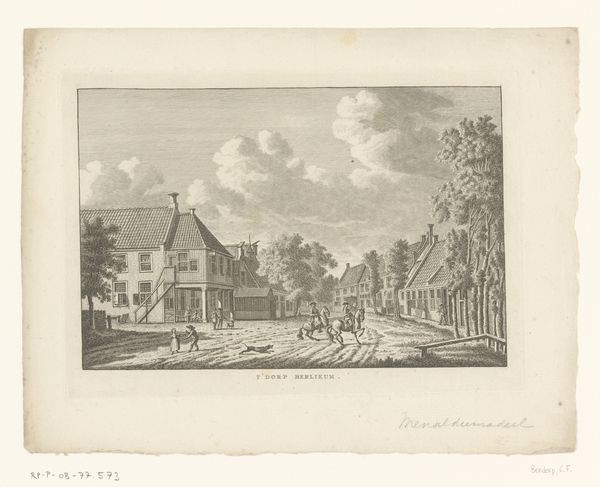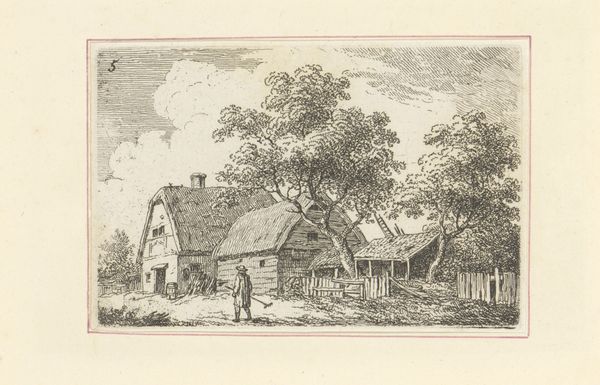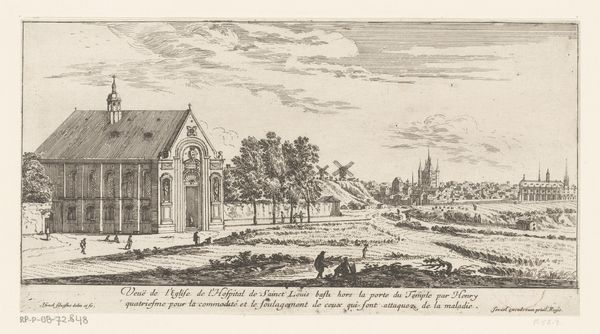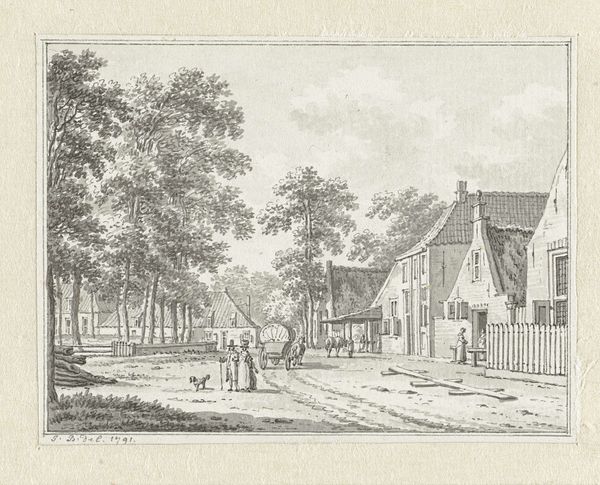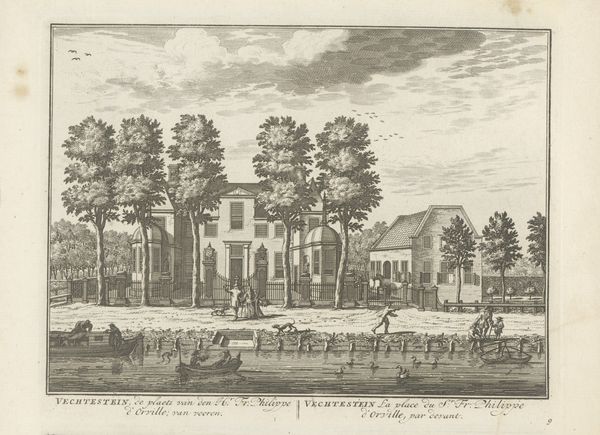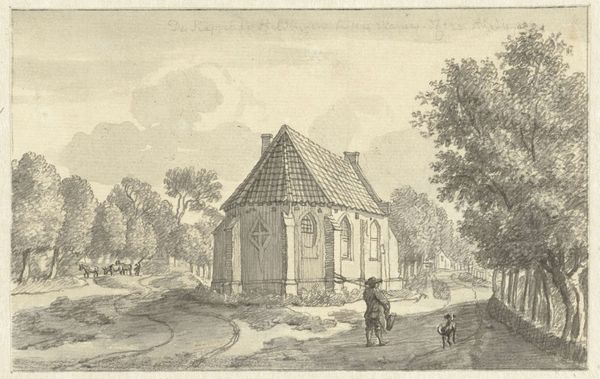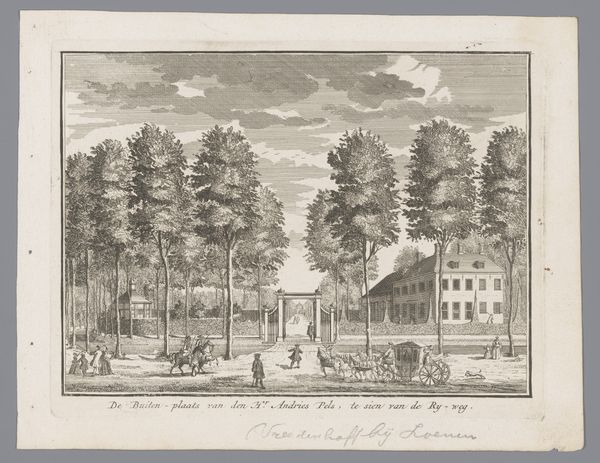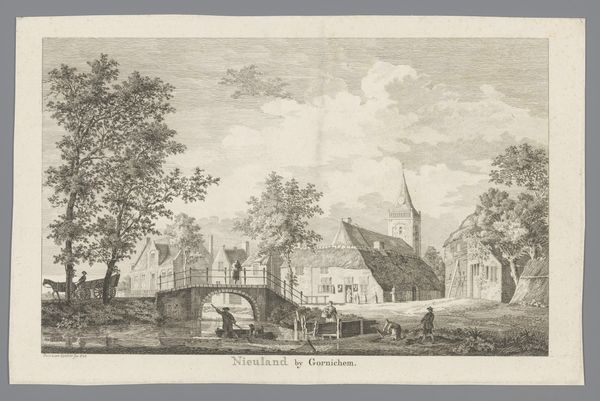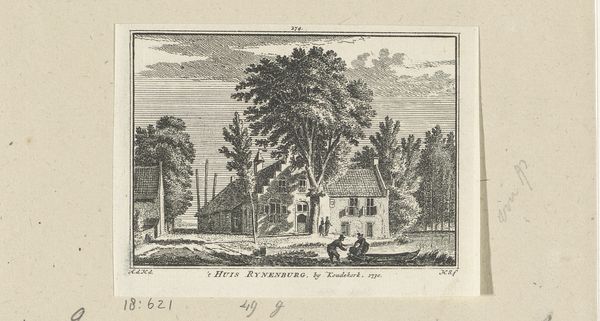
print, engraving
#
dutch-golden-age
# print
#
landscape
#
cityscape
#
genre-painting
#
engraving
Dimensions: height 165 mm, width 199 mm
Copyright: Rijks Museum: Open Domain
Editor: This is "Gezicht op de Dorpstraat te Amstelveen," an engraving by Abraham Rademaker, created sometime after 1727. It's so detailed, almost like a photograph, capturing a street scene. It strikes me as very serene and ordered. How do you interpret this work? Curator: Well, viewing it through a historical lens, the engraving offers us insight into the self-presentation of the Dutch Golden Age. It's a constructed image, not just a simple record. Think about the decision to show Amstelveen as orderly, prosperous. This image enters the public sphere. Editor: Constructed? How so? Curator: Look at the figures – seemingly going about their daily lives, yet arranged so neatly. Consider how Rademaker is depicting a specific ideal: Dutch society values domesticity and civic order. This also presents Amstelveen for outsiders to create expectations about Dutch culture. Also note that he produced and sold numerous cityscapes, creating a brand or identity, if you will. What could the target audience make of the piece? Editor: I see what you mean. It’s not just a landscape; it’s promoting a particular image. Was this meant for locals or outsiders? Curator: Probably a mix. Locals may have purchased it as a representation of pride. Outsiders, particularly those looking to invest or trade in the Netherlands, may have viewed it as confirmation of its stability and affluence. How effective do you find the piece today as a record? Editor: It makes me question the apparent simplicity of landscape art. The politics of imagery, as you mentioned, are at play. Curator: Precisely! It is a blend of reality and representation. These kinds of images actively participated in the cultural and economic life of the Netherlands. We tend to see art as outside culture rather than forming culture. Editor: I guess I was so focused on the scene itself that I overlooked its potential cultural impact. I'll think twice next time.
Comments
No comments
Be the first to comment and join the conversation on the ultimate creative platform.


